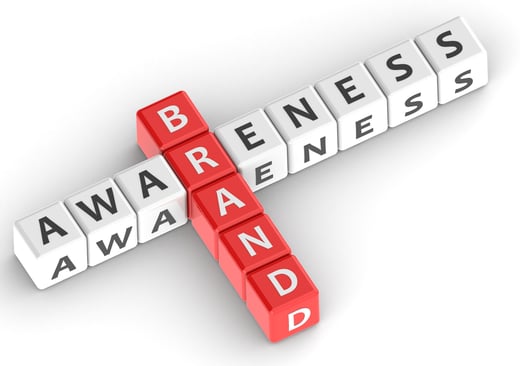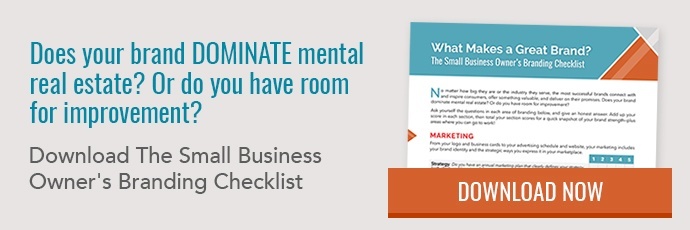 When calculating a brand's value, one of the most important metrics is awareness. While most businesses are concerned about raising brand awareness, not everyone realizes that there are different levels of awareness. The most important distinction is between top of mind (or unaided) vs. aided awareness. In order to identify these differences in awareness, you need to ask certain questions. There can be dramatic differences in the results produced from different types of awareness. In one study of car purchasing behavior, a Nielsen study found that top-of-mind awareness drives 90% of purchasing intent.
When calculating a brand's value, one of the most important metrics is awareness. While most businesses are concerned about raising brand awareness, not everyone realizes that there are different levels of awareness. The most important distinction is between top of mind (or unaided) vs. aided awareness. In order to identify these differences in awareness, you need to ask certain questions. There can be dramatic differences in the results produced from different types of awareness. In one study of car purchasing behavior, a Nielsen study found that top-of-mind awareness drives 90% of purchasing intent.
Aided vs. Unaided Awareness
Let's start by examining the difference between the two basic types of awareness. The terms relate to how readily people (such as focus group participants or people answering surveys) can identify certain brands. Aided awareness, as the name suggests, refers to a familiarity that requires some kind of prompting. Unaided awareness, on the other hand, is literally at the "top of mind," in that people can name brands with no assistance.
How Do Brands Measure Aided and Unaided Awareness?
Companies are extremely concerned with measuring aided and unaided awareness. The two levels of awareness are measured by the way questions are posed. Consider a consumer survey or focus group where people are asked to name three fast-food restaurants. They might give answers such as McDonald's, Burger King, and KFC. However, the interviewer (or written survey) does not aid or prompt them in any way. Their answers can be considered top of mind because they're readily given with no assistance. Unaided awareness is the goal of any brand.
Let's assume the above fast food survey continues with a different type of question, such as "Which of these brands are you familiar with: Domino's, Wendy's, etc.?" In this case, the interviewee has been prompted. He or she may be familiar with these brands, but they weren't "top of mind." This type of awareness, while not as valuable as unaided, is still desirable.
The Importance of Top of Mind Awareness
Every business aims to achieve top of mind awareness. There are a few reasons for this.
- Top of mind awareness is strongly correlated with brand loyalty. Customers get into habits and often choose something that's familiar to them.
- When you have top of mind awareness, there's less need to advertise and promote. Of course, you'll still need a marketing strategy. However, once your brand is utmost in customers' minds, more than half of the work has been done for you.
- You can market more creatively. You may notice that some of the most creative ads come from companies with strong top of mind appeal. This isn't only because they often have large budgets. It's also because they don't have to keep repeating their name or even the main features and benefits. People already know this. Thus, they can focus more on being original, funny, or telling interesting stories.
Consider once again the aforementioned study of car buyers that found 90% of purchase intent is driven by top of mind awareness. It's important to interpret these findings correctly. While unaided awareness is crucial, it also has to be the right kind of awareness. Nielsen VP Damian Garbaccio says, "quality awareness is more important than quantity." He goes on to say that the best approach is an omnichannel strategy that combines the right data and analytics. In other words, you need to target the right customers and deliver a message that's relevant to their needs.
Tips for Effective Brand Campaigns
If you want to achieve top of mind awareness for your business, you need a strong brand campaign. There are several points to keep in mind if you want customers to be familiar with your brand.
- Present a clear brand message. Your logo, tone, style, and content should be consistent across platforms and channels.
- Understand the difference between brand awareness campaigns and other types of marketing. For example, if you're focusing entirely on a product's features and benefits, you're not necessarily raising brand awareness. A brand awareness campaign emphasizes your core values, key facts about your business (e.g., who you are, how you got started), and what sets you apart from the competition.
- Commit to a long-term strategy. You can't build brand awareness overnight. You need to repeat your message so it becomes familiar to customers. Use the traditional strategies common to brick and mortar campaigns for guidance even if your business is digital. This means using consistency and frequency to reinforce your message.
Make Top of Mind Awareness Your Priority
Aided and unaided awareness are not completely separate or mutually exclusive, of course. To some extent, everything you do to build awareness is beneficial for both levels. However, it's more likely that the actions you take to build unaided awareness will also contribute to aided awareness than the other way around. Consistent branding campaigns, as we've seen, are essential for unaided or top of mind awareness. These will also help with aided awareness.
Suppose you're interviewing 100 people to measure the effects of a campaign. You may find that 25 were able to name your brand unaided while another 40 recognized your name when prompted. You can conclude from this that your branding efforts helped to raise both levels of awareness even though top of mind is your primary goal. Building top of mind awareness should be a goal for any business that wants to build a successful, long-lasting brand.

